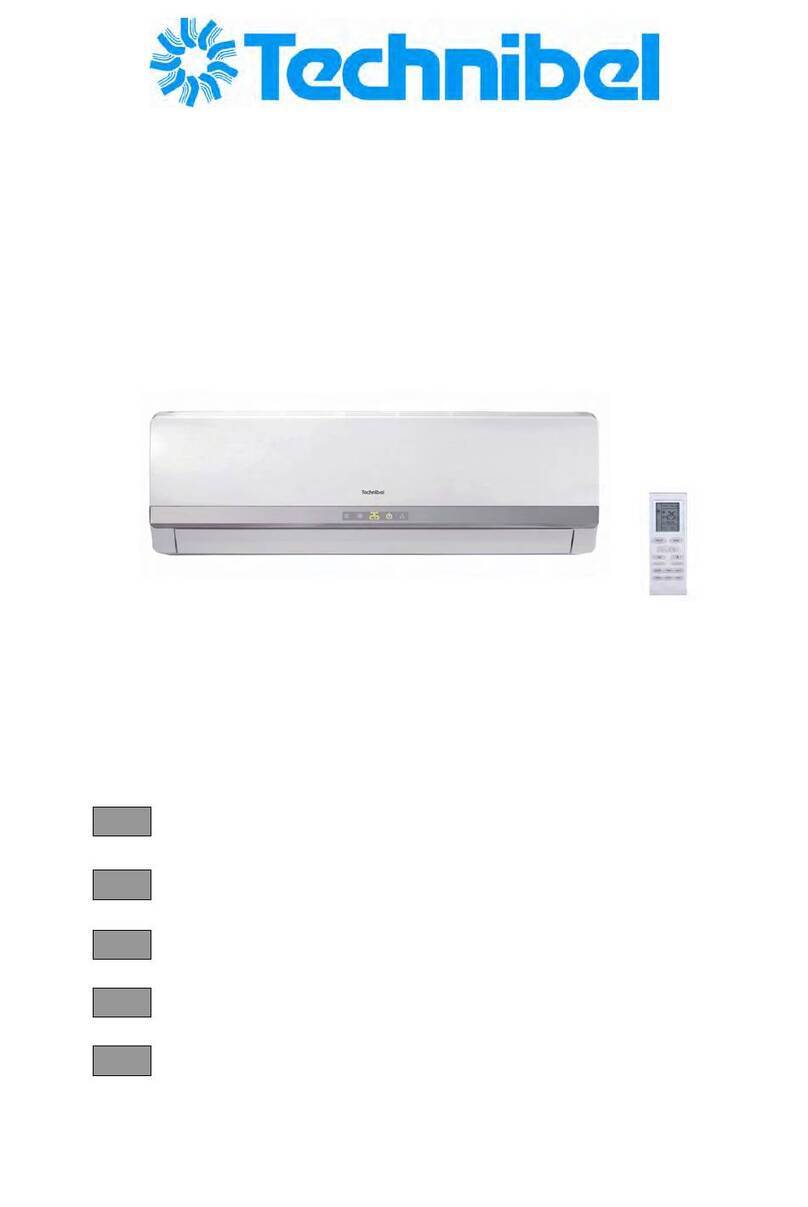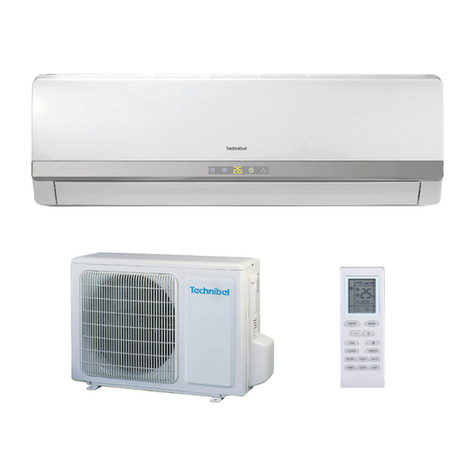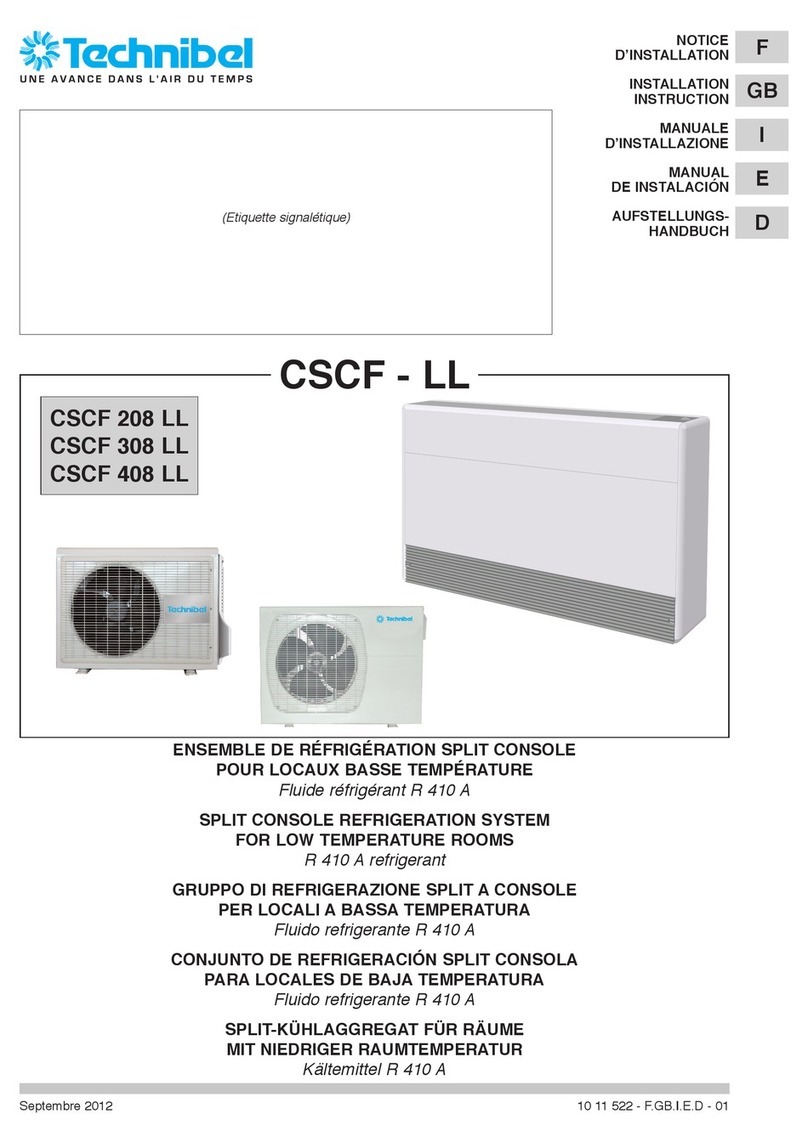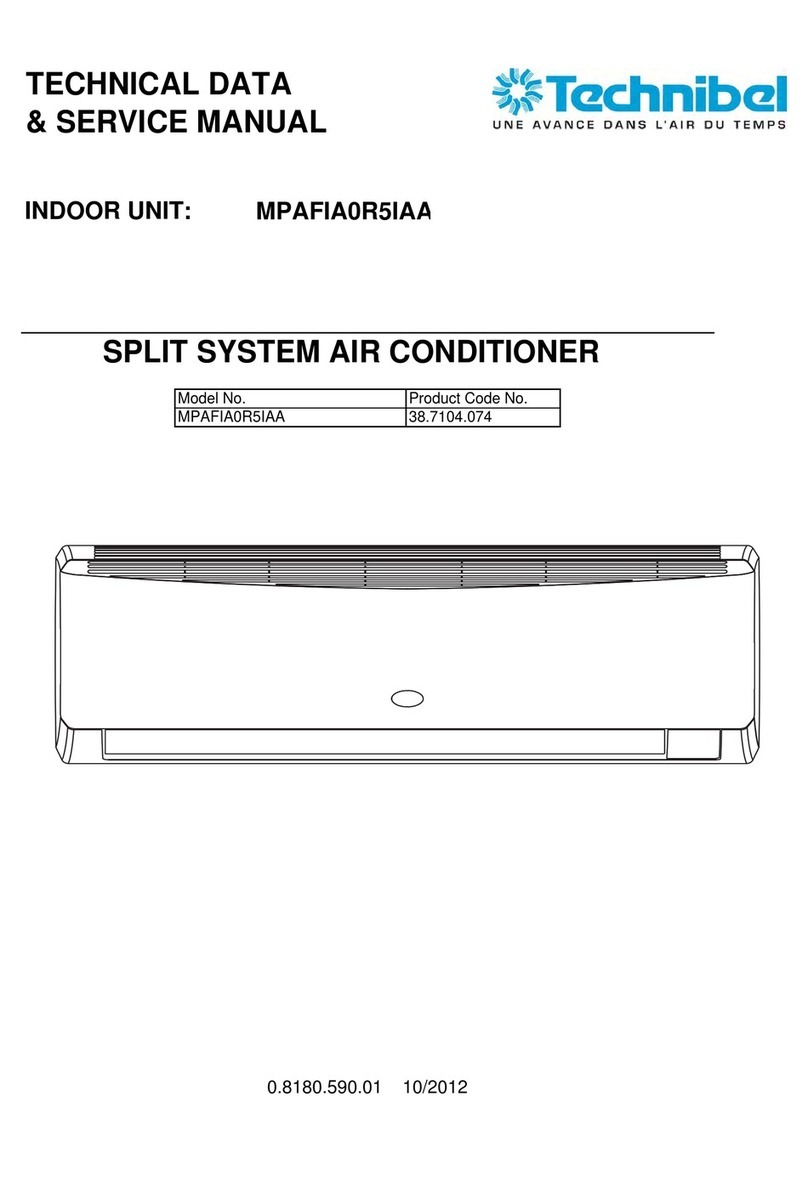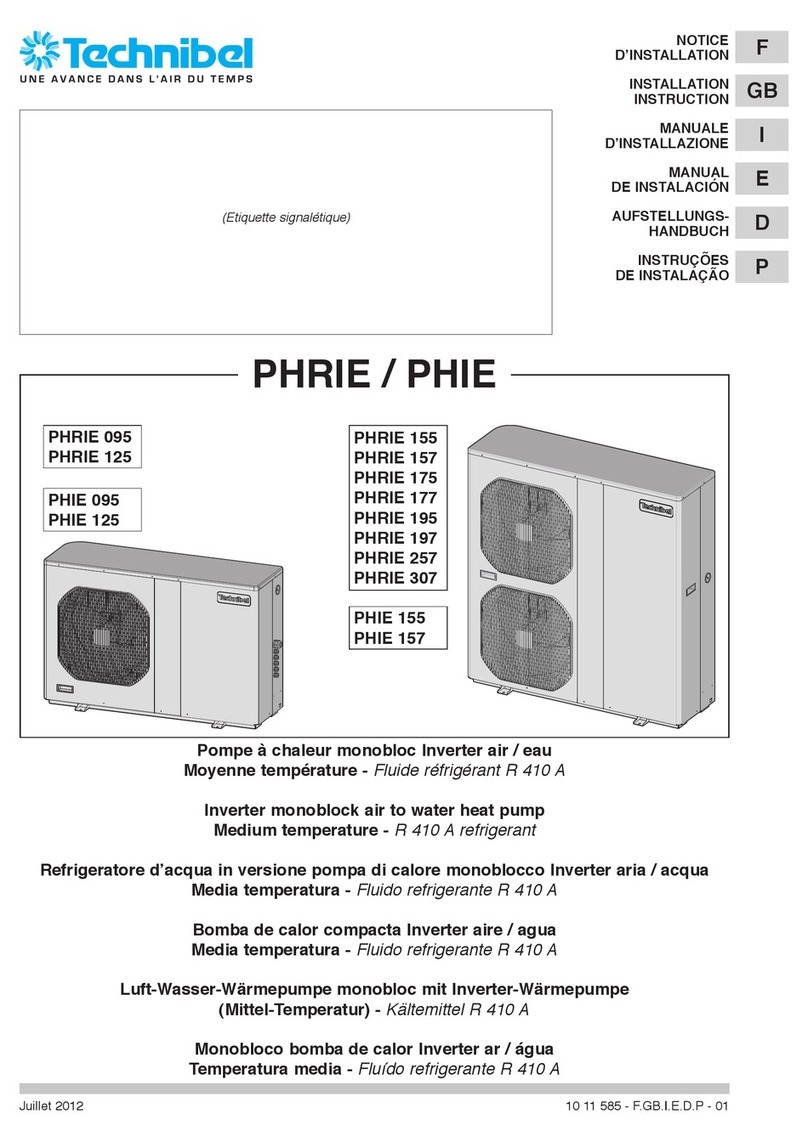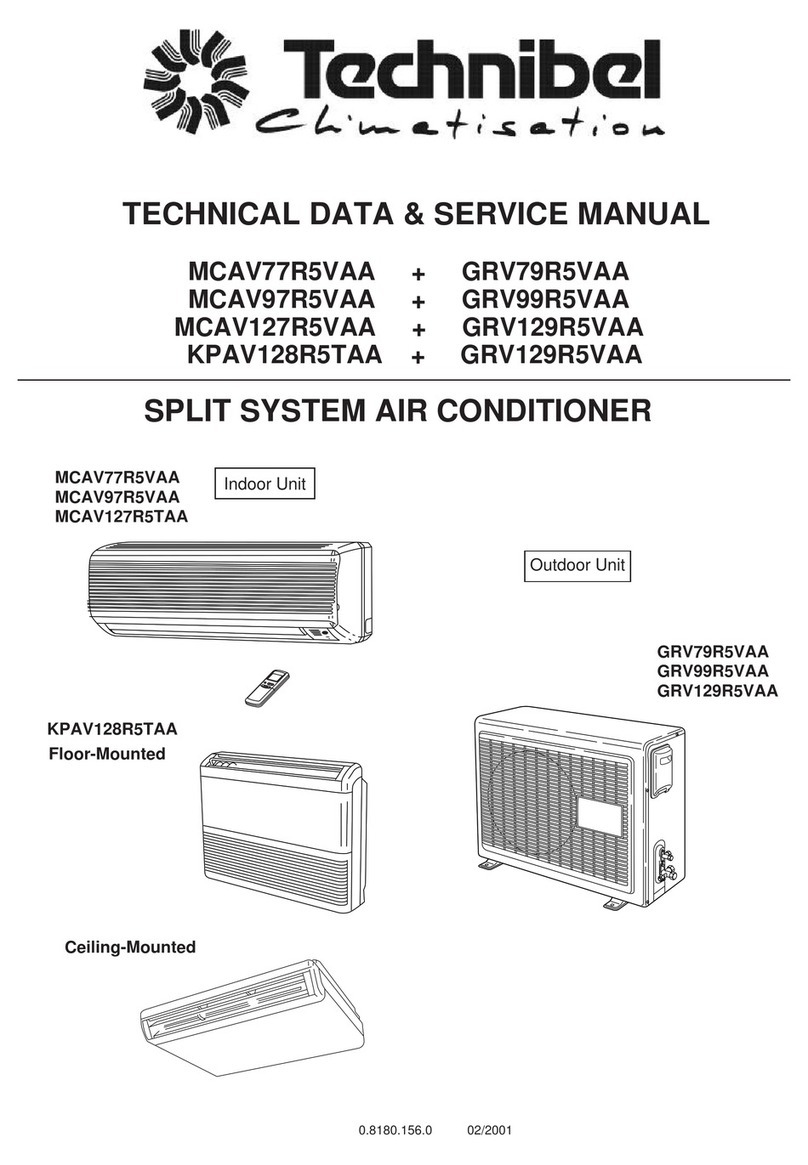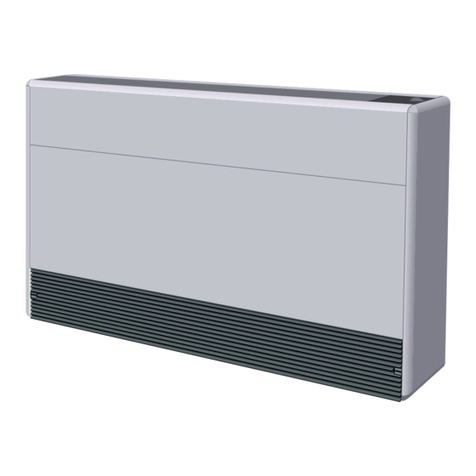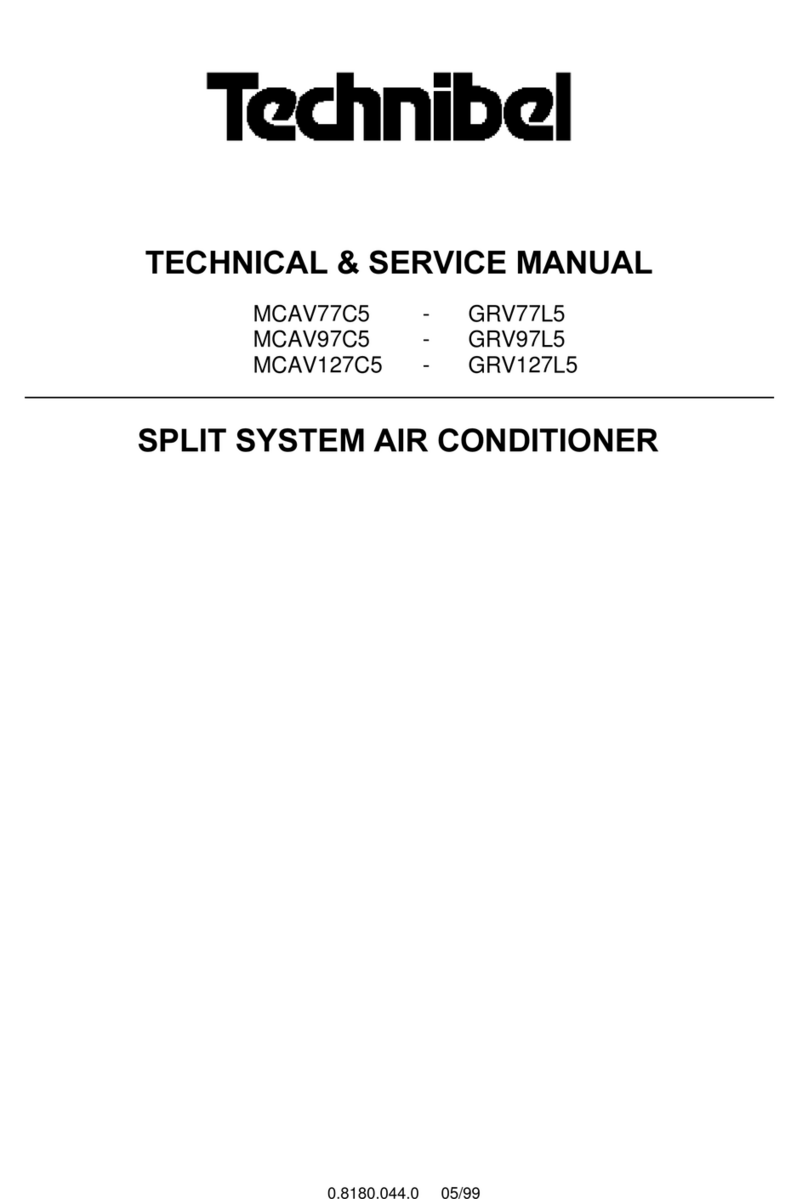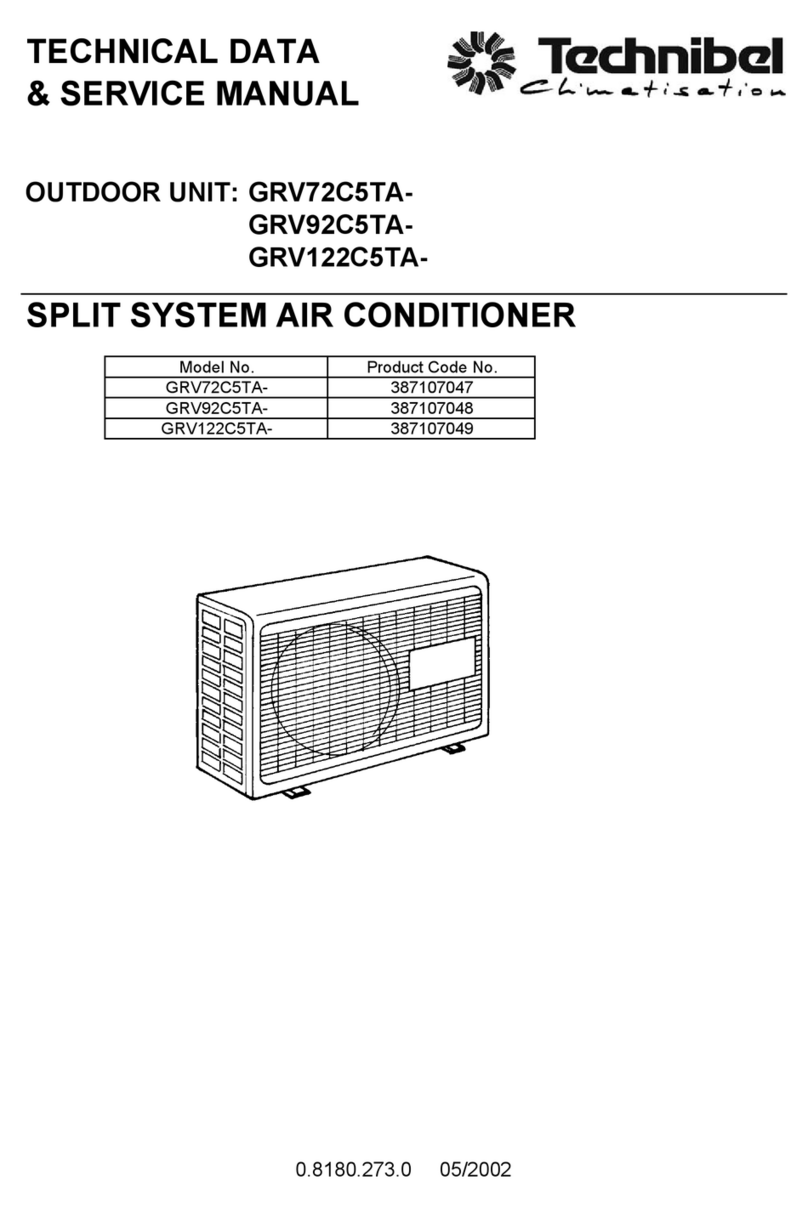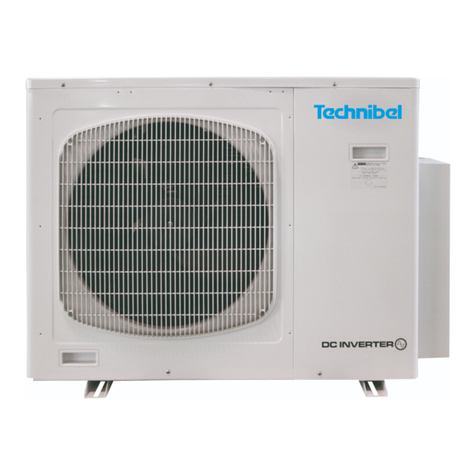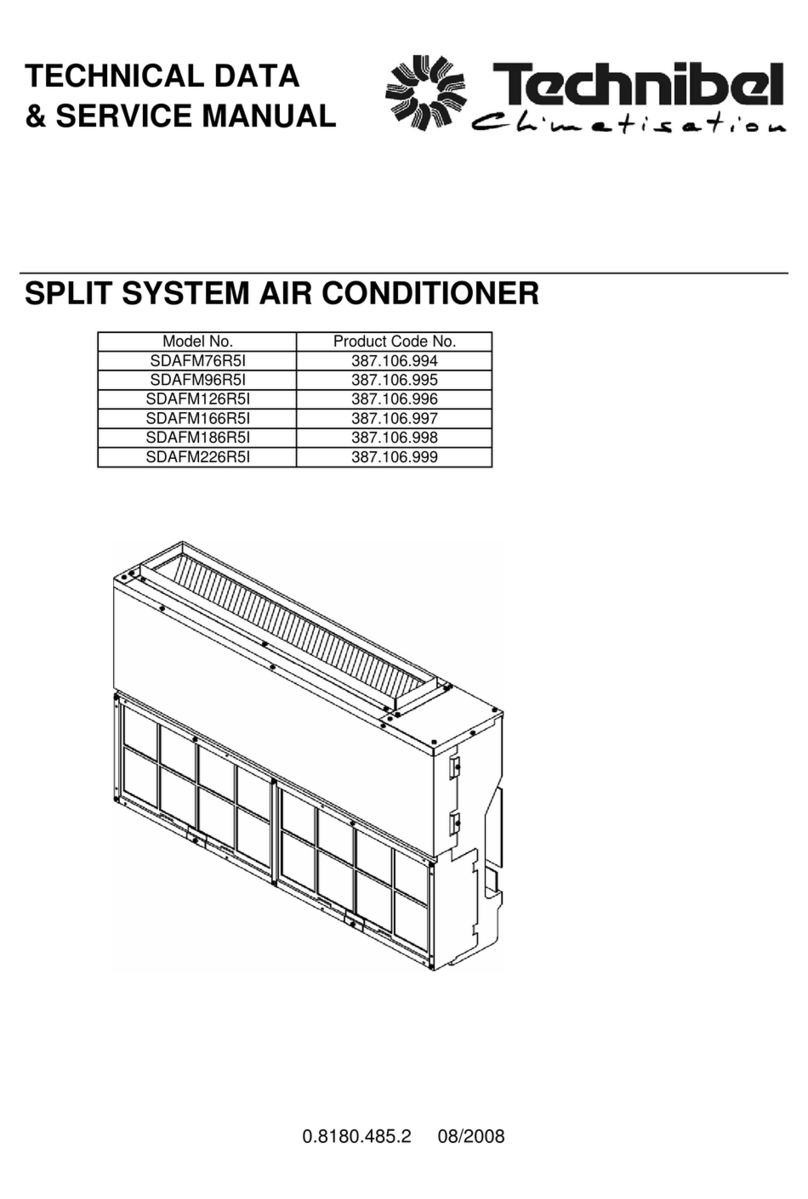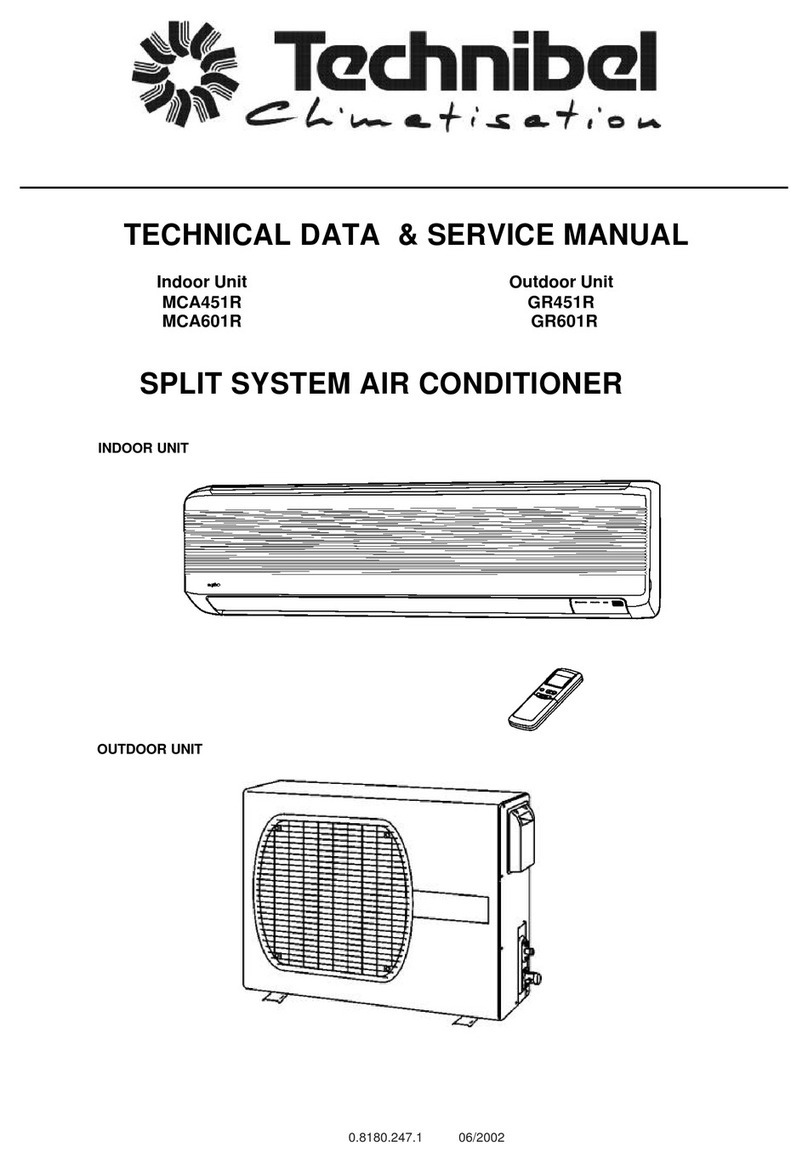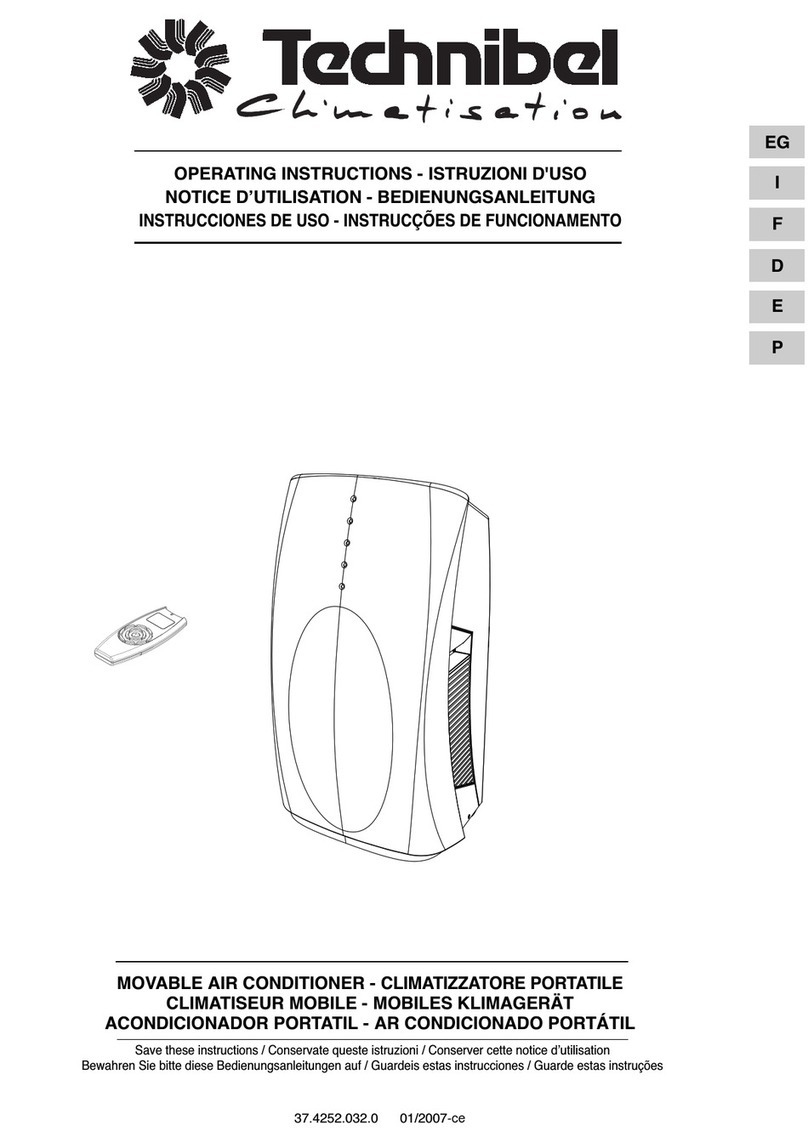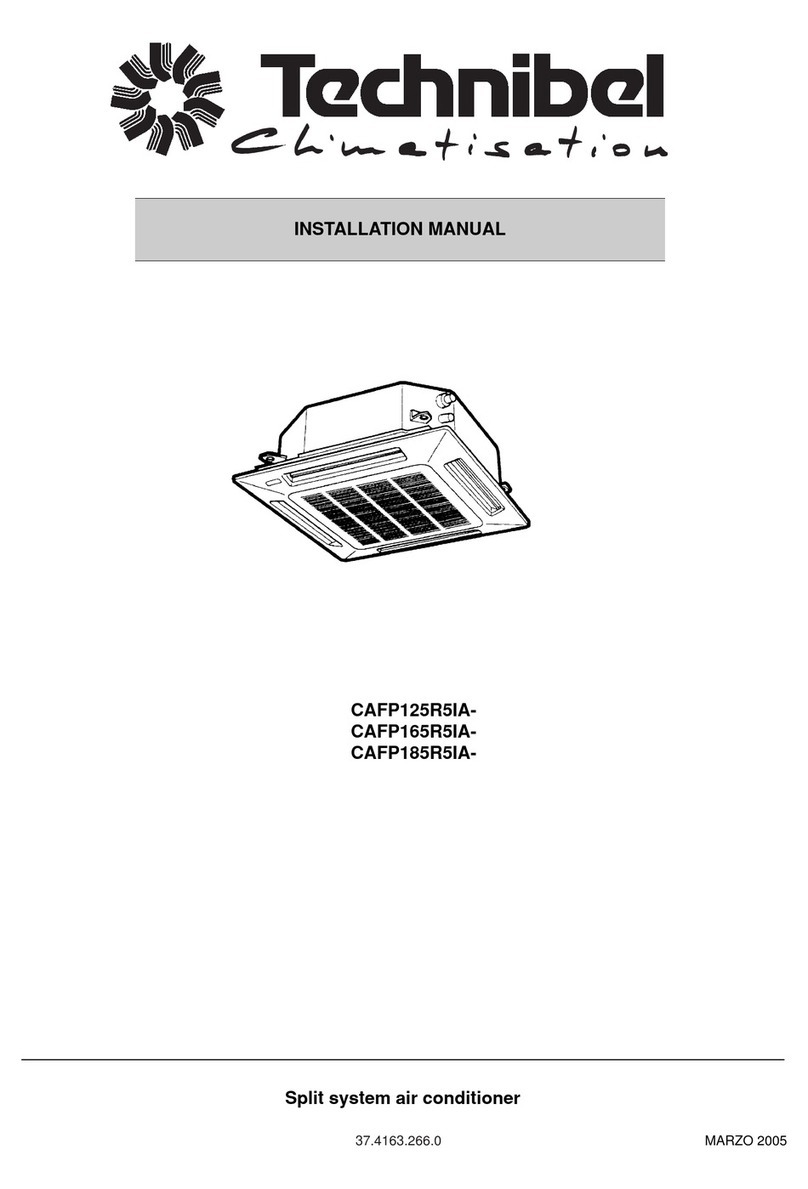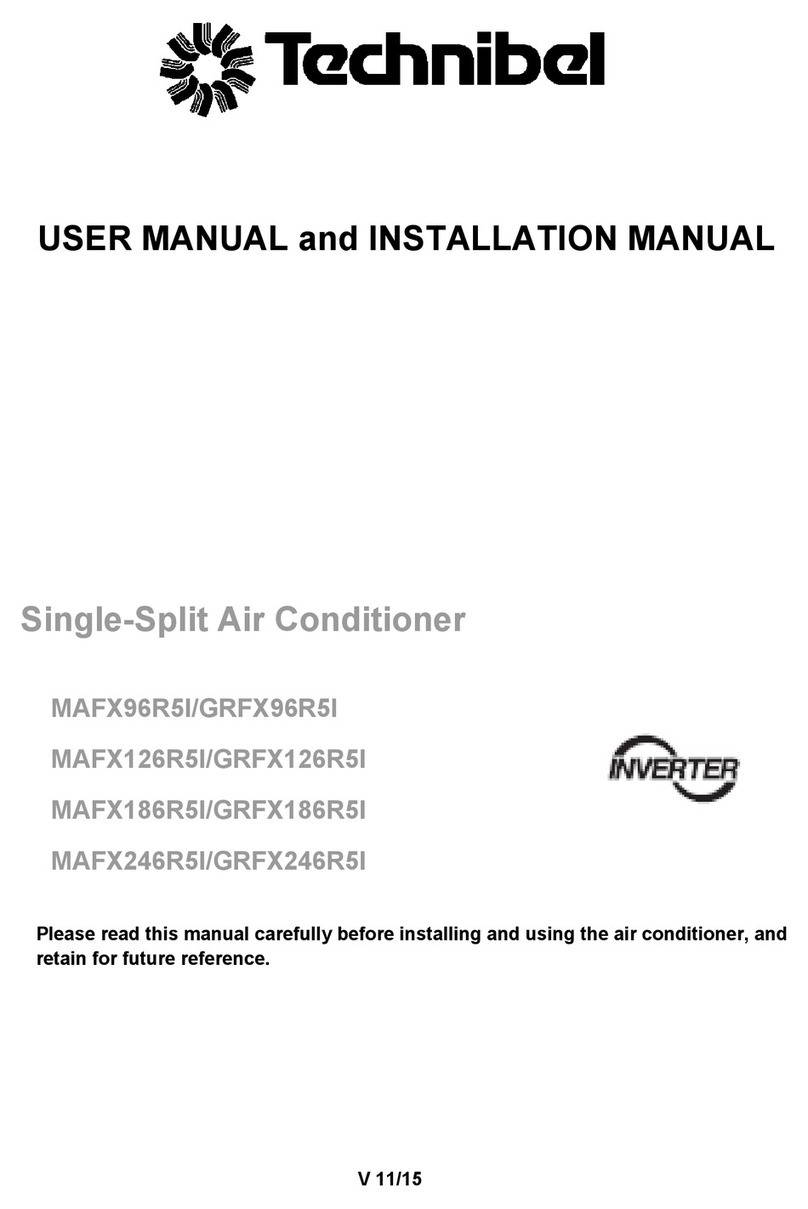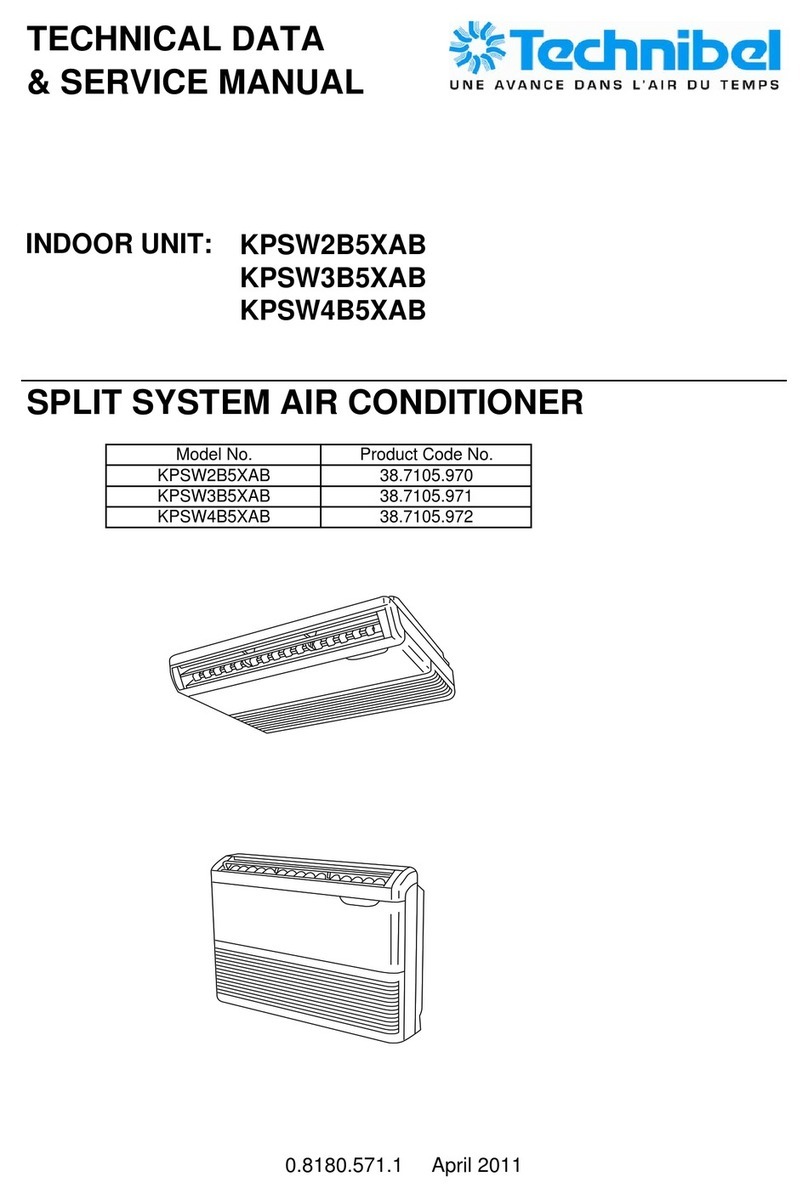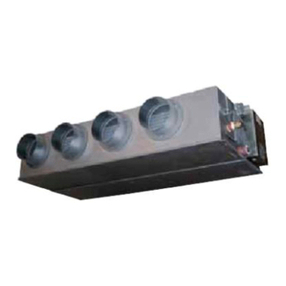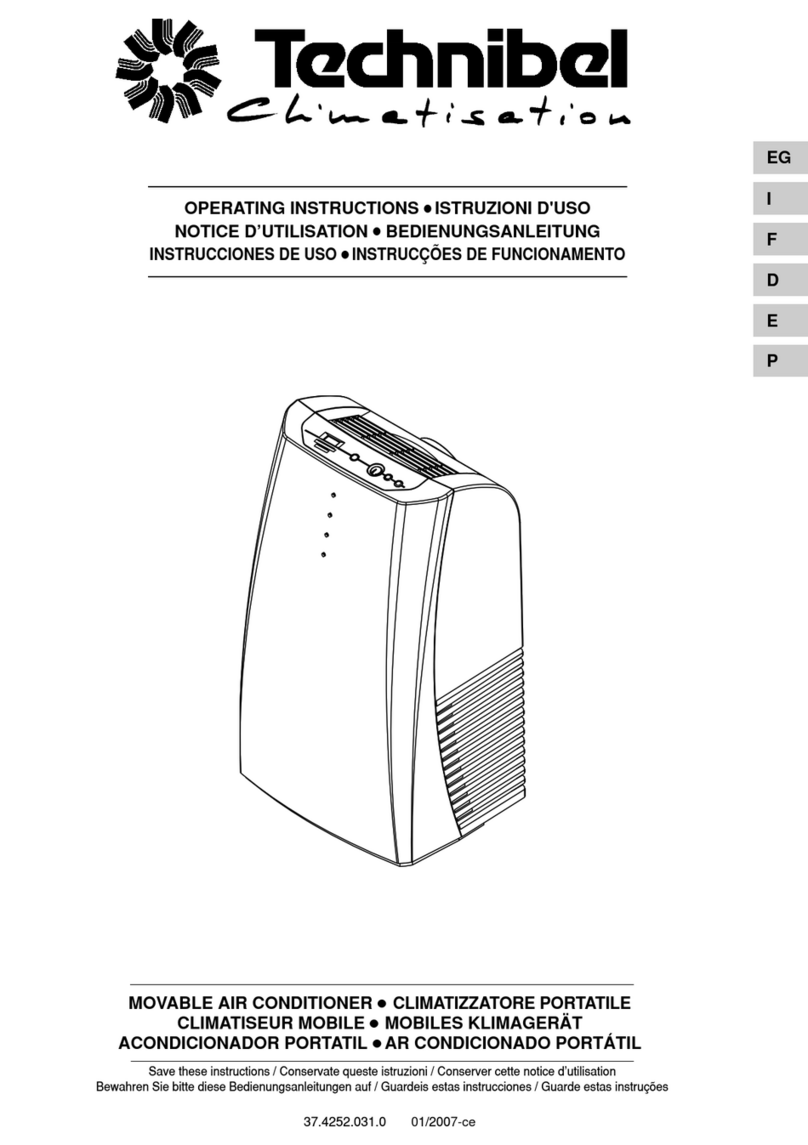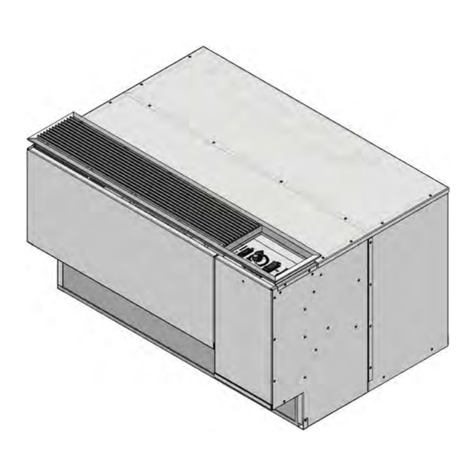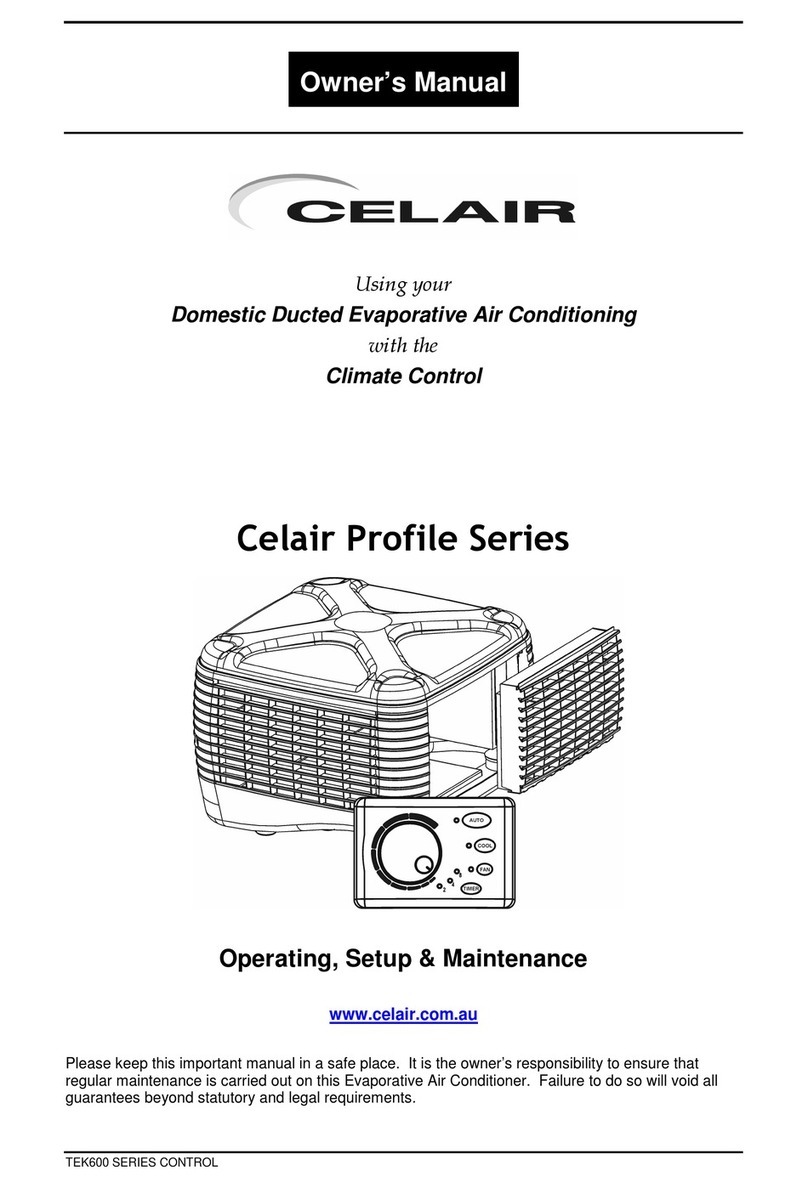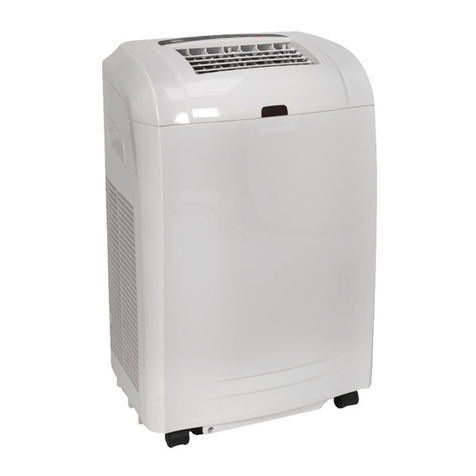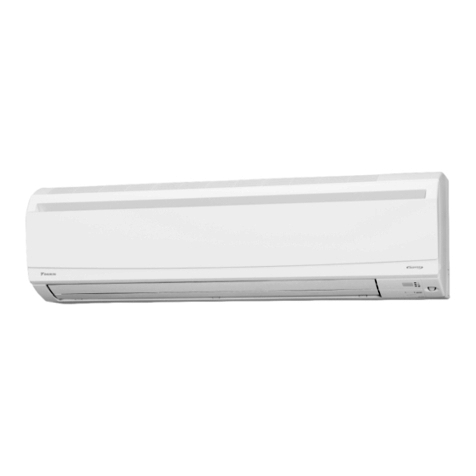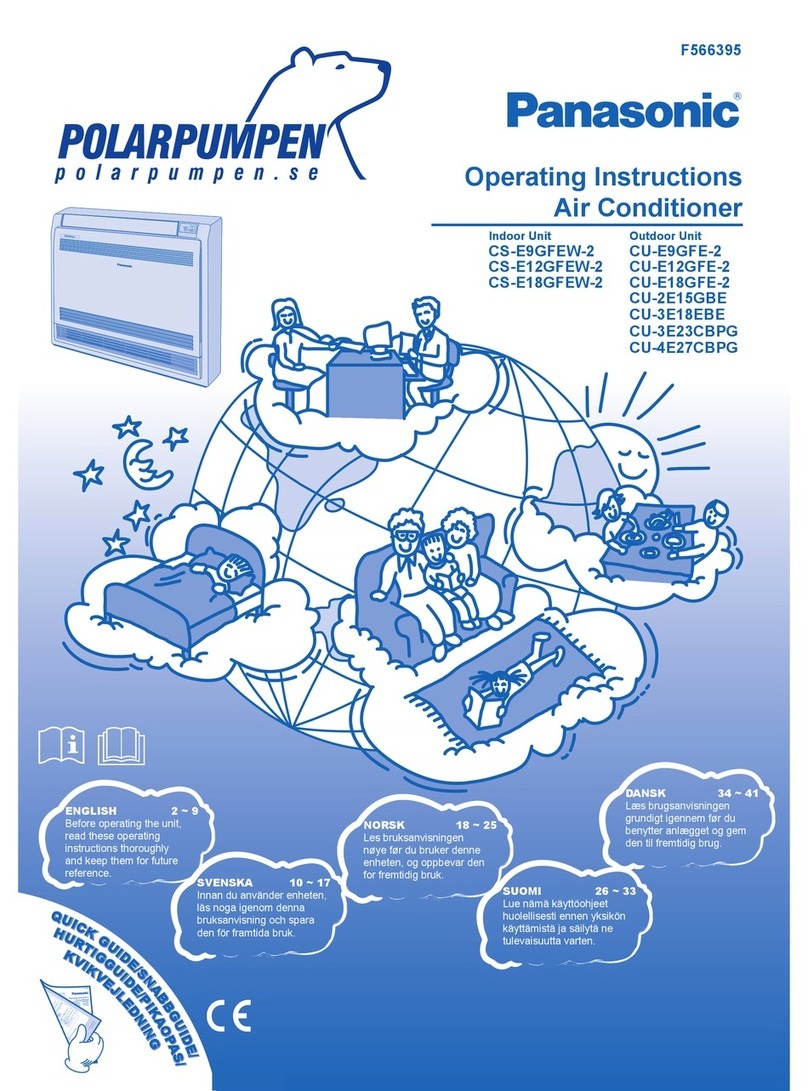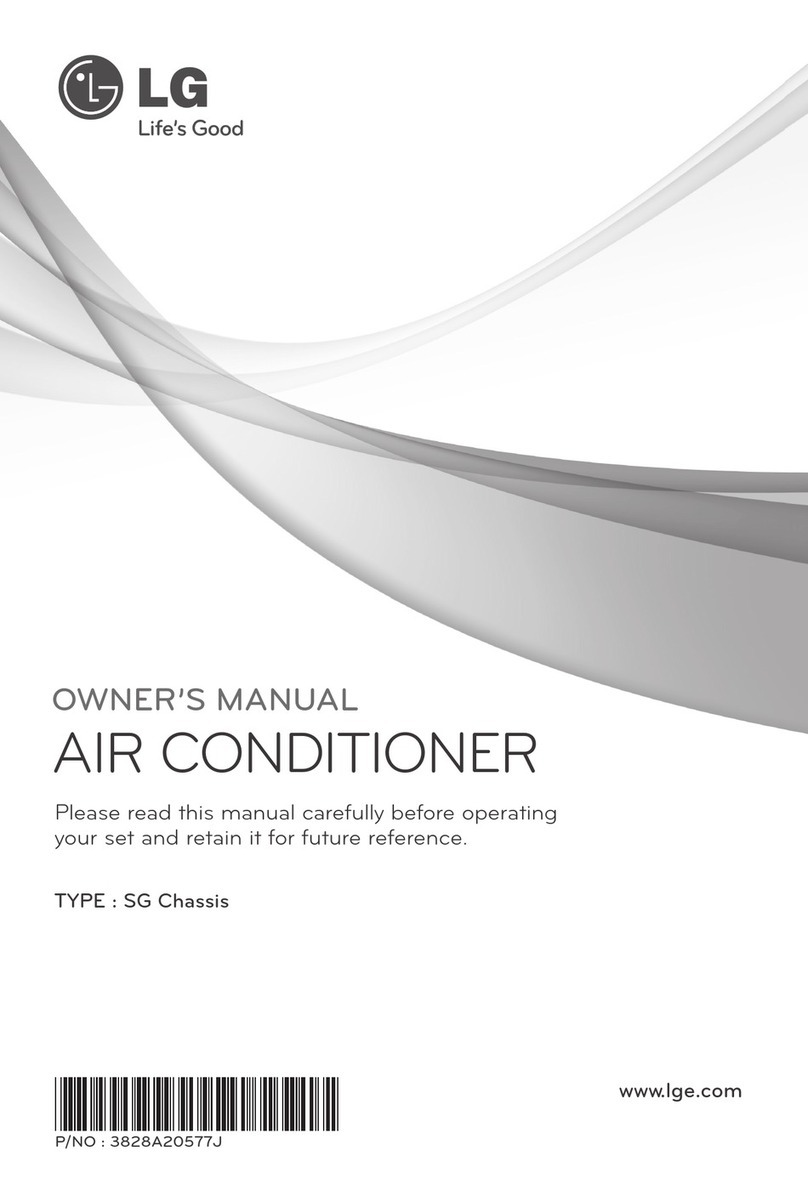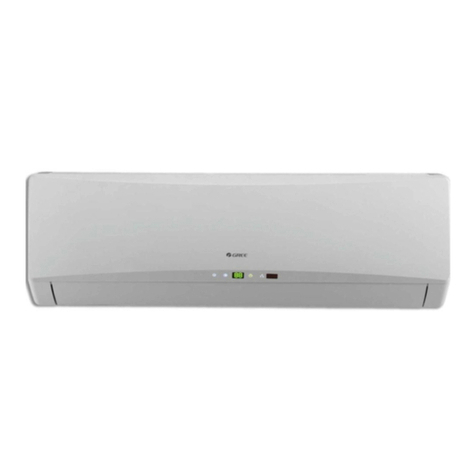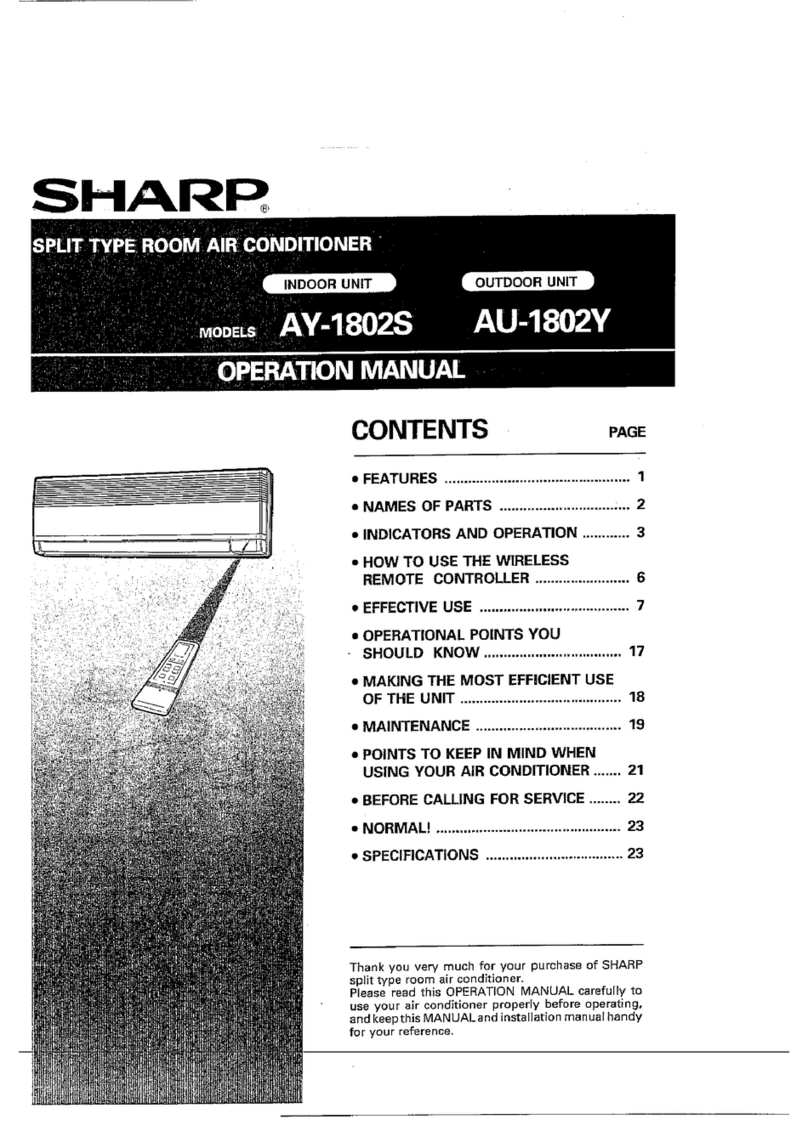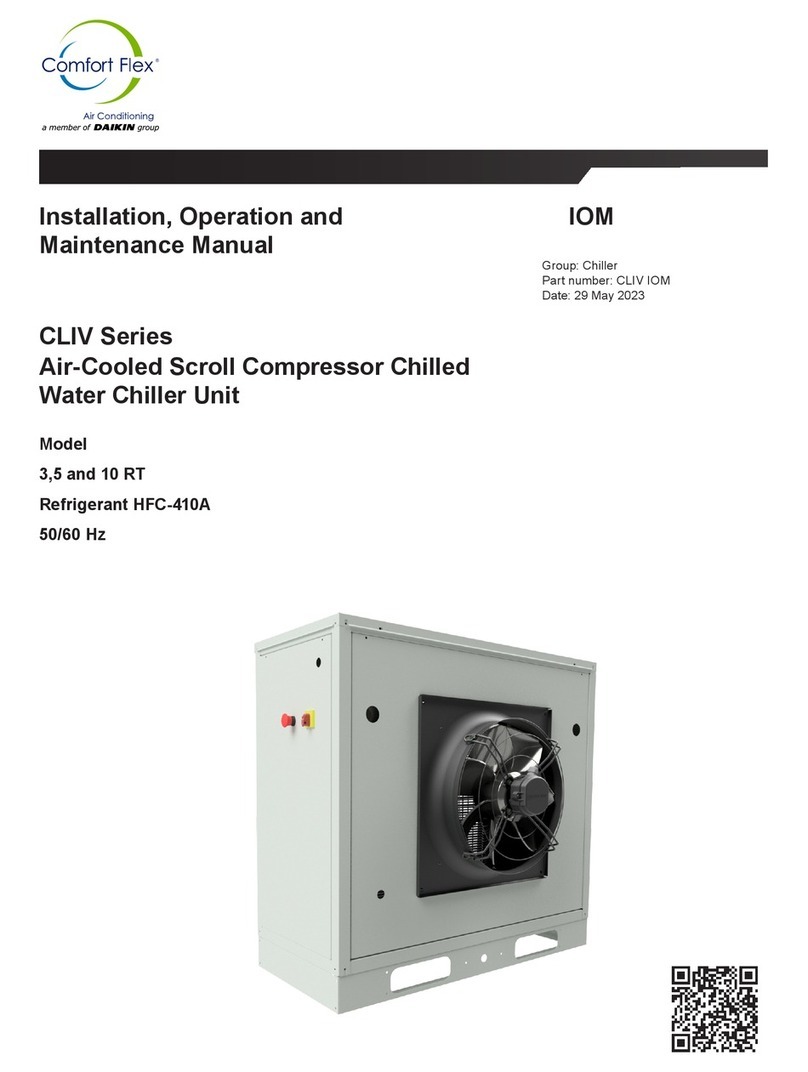3
EG
WARNING ¥ This symbol refers to
a hazard or unsafe
practice which can
resuklt in severe
personal injury or
death.
IN CASE OF IMPROPER INSTALLATION
The manufacturer shall in no way be responsible for improper
installation or maintenance service, including failure to follow
the instruction in this document.
When Transporting
Be careful when pocking up and moving the indoor and outdoor
units. Get a partner to help, and bend your knees when lifting
to reduce strain on your back. Sharp edges or thin aluminum
fins on the air conditioner can cut your fingers.
When Installing
ÉIn a Room
Properly insulate any tubing run inside a room to prevent
ÒsweatingÓ that can cause driping and water damage to walls
and floors.
ÉIn Moist or Uneven Locations
Use a raised concrete pad or concrete blocks to provide a
solid, level foundation for the outdoor unit. This prevents water
damage and abnormal vibration.
ÉIn an area with High Winds
Securely anchor the aoutdoor unit down with bolts and a metal
frame. Provide a suitable air baffle.
When Connecting Refrigerant Tubing
¥ Executive enough ventilation in case refrigerant gases leak
during operations. Be careful that the contact of the
refrigerant gases with the flare will cause the generation of
poisonous gases.
¥ Keep all tubing runs as short as possible.
¥ Use the flare method for connecting tubing.
¥ Apply refrigerant lubricant to the matching surfaces of the
flare and union tubes before connecting them, then tighten
the nut with a torque wrench for a leak-free connection.
¥ Check carefully for leaks before starting the test run.
When Servicing
¥ Turn the power OFF at the main power box (mains) before
opening the unit to check or repair electrical parts and wiring.
¥ Keep your fingers and clothing away from any moving parts.
¥ Clean up the site after you finish, remembering to check
that no metal scraps or bits of wiring have been left inside
the unit being serviced.
CAUTION ¥ This symbol refers to
a hazard or unsafe
practice which can
resuklt in personal
injury or product or
property damage.
SPECIAL PRECAUTION
1. GENERAL
¥ ELECTRICAL SHOCK CAN CAUSE SEVERE
PERSONAL INJURY OR DEATH. ONLY A
QUALIFIED, EXPERIENCED ELECTRICIAN
SHOULD ATTEMPT TO WIRE THIS SYSTEM.
When Wiring
¥ Do not supply power to the unit until all wiring and tubing are
completed or reconnected and checked.
¥ Highly dangerous electrical voltage are used in this system.
Carefully refer to the wiring diagram and these instruction
when wiring. Improper connections and inadequate
grounding can cause accidentaly injury or death.
¥Ground the unit following local electrical codes.
¥ Connect all witing tightly. Loose wiring may cause
overheating at connection points and a possible fire hazard.
This booklet briefly outlines where and how to install the air
conditioning system. Please read over the entire set of
instructions for the indoor and outdoor units and make sure all
accessory parts listed are with the system before beginning.
1-1. Tools Required for Installation (not
supplied)
1. Standard screwdriver
2. Phillips head screwdriver
3. Knife or wire stripper
4. Tape measure
5. Level
6. Sabre saw or key hole saw
7. Hacksaw
8. Core bits
9. Hammer
10. Drill
11. Tube cutter
12. Tube flaring tool
13. Tourque wrench
14. Adjustable wrench
15. Reamer (for deburring)
1-2. Accessories Supplied with Unit
See Table 1-1 to 1-3.
Table Type
1-1 4-Way AirDischarge Semi-Concealed
1-2 Ceiling-Mounted
1-3. Type of Copper Tube and Insulation
Material
To purchase these material from a local source, you will need:
1. Deoxidized annealed copper tube for refrigerant tubing.
2. Foamed polyethylene insulation for 15.88 mm (5/8Ó) or
19.05 mm (3/4Ó) O.D. copper tubes as required to precise
length of tubing. Wall thickness of the insulation should
be not less than 8 mm.
3. Use insulated copper wire for field wiring. Wire size varies
with the total length of witing. Refer to Section 5. Electrical
Wiring for details.




















